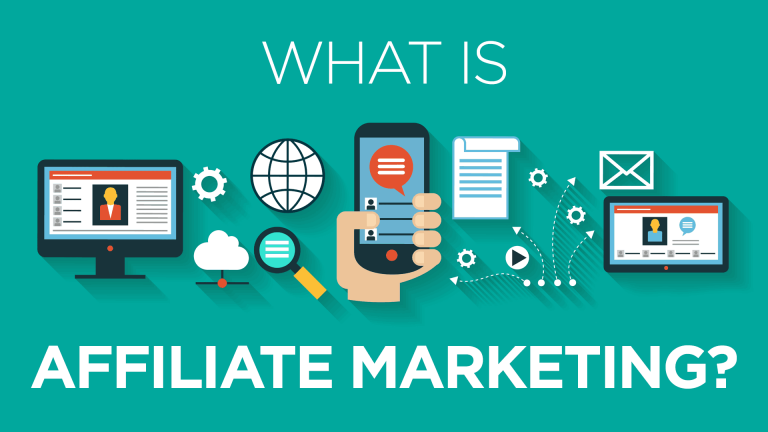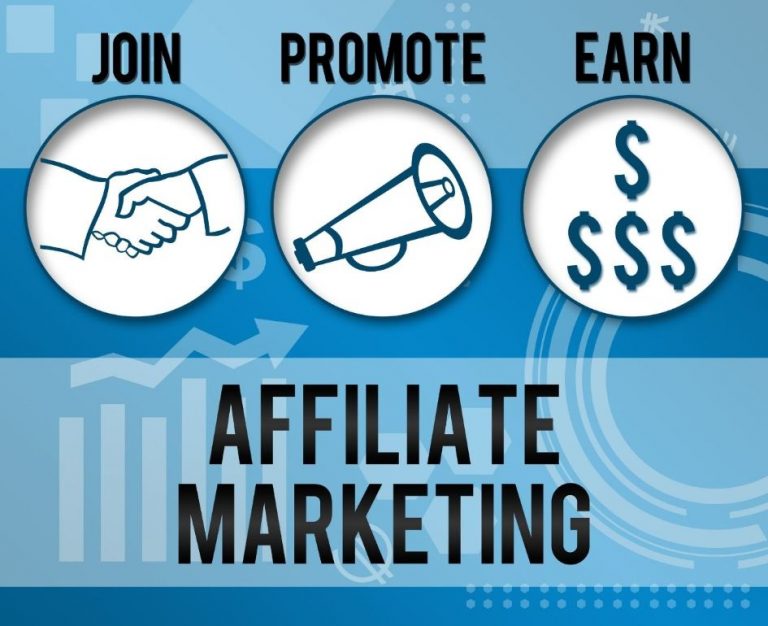Zero-Click Affiliate Marketing: Surviving Google’s AI Overviews in 2025
AFFILIATE MARKETING STRATEGIES 2026: HOW TO BOOST YOUR SEO & INCOME PROTOCOL: ACTIVE
ID: REF-2025-AC116Conclusions built strictly upon verifiable data and validated research.
Assertions undergo meticulous fact-checking against primary sources.
Delivering clear, impartial, and practical insights for application.
Google AI Overviews changed the game. Users get answers fast. No need to click. No need to visit a site. Affiliate links? Often ignored. This is zero-click affiliate marketing. 69% of searches end here now. Survival means adapting. Thriving means leading. This guide shows you how. Focus on visibility. Focus on trust. Focus on intent. Stop chasing clicks. Start building authority. The SERP changed. Your strategy must change too.
Key Takeaways
- AI Overviews now handle 69% of search queries (Similarweb 2025), making zero-click the norm.
- Direct answers in SERPs threaten traditional affiliate link clicks and traffic.
- E-E-A-T content (experience, expertise, authority, trust) is critical for AI inclusion.
- Content must target featured snippets & PAA boxes to get traffic despite no clicks.
- Long-tail keywords and user intent analysis outperform generic keyword stuffing.
- Measure success through micro-conversions, not just top-line click numbers.
- Personal experience in reviews boosts brand visibility & AI trust signals.
- Diversify beyond Google with social, email, niche communities, and direct traffic.
What is the future of affiliate marketing in 2025?

Affiliate marketing in 2025 will thrive by adapting to zero-click realities. AI overviews answer searches instantly. Users stay on Google. You must influence those AI results to survive. It’s not about clicks. It’s about becoming the source.
AI as Your New Co-Marketer
Google’s AI pulls content to showcase. Your job is to be in its feed. Quality matters most. Specificity beats vagueness every time. Fact-check. Update constantly. Be reliable. AI rewards accuracy. Use tools like Perplexity AI to test your content’s potential.
| Key Factor | Your Action |
|---|---|
| Content Depth | Cover topics users don’t ask for directly |
| Semantic Clarity | Structure for AI parsing with semantic clustering |
| Source Authority | Build trust via citations, data, and citations |
Multi-Channel Positioning Wins
AI overviews use many sources. Get cited across videos, Reddit, news. Focus on platforms AI scrapes. YouTube is gold. Old-school SEO still works. Build topical clusters. Write around core terms. Help AI link your brand to solutions. See YouTube tactics here.
Zero-click means you’re invisible unless AI quotes you. Target answer-snippets. Ask, “Would my line fit in a Google box?” If yes, you’re visible. If not, rewrite. Test with AI prompts first. Win by training the algorithm. Your content isn’t for users alone. It’s for AI.
Does Google penalize AI content in 2025?
No. Google does not penalize AI content in 2025. It penalizes poor content. AI or human doesn’t matter. Only quality, relevance, and user intent count now.
What Google Actually Cares About
Google judges content by three things. Accuracy, depth, and user satisfaction. It doesn’t care how you write. Only that users get answers fast. AI helps scale good content. It can’t fix lazy thinking.
Bad content ranks low. Always has. Always will.
How AI Fits Into SEO in 2025
AI content wins when it beats human content. Not because it’s AI. Because it’s better.
| Factor | Human Fast | AI Fast |
|---|---|---|
| Research | Slower, deeper | Speed, breadth |
| Voice | Natural, unique | Risk of flat tone |
| Scale | Limited | Massive |
Use AI smart. Edit like a pro. Match search intent. Learn how top posts work.
“AI is a tool. Like a hammer. You can build a house. Or smash your thumb. It’s up to you.”
Check your content. Ask: “Does this answer the question fully?” If not, Google won’t favor it. Use AI detection tools carefully. They’re unreliable. Focus on value instead.
AI speeds up production. Human judgment delivers winners.
How to start affiliate marketing with no money in 2025?

Start with free tools. Pick a niche. Join affiliate programs like Walmart. Drive traffic via social media or YouTube. Track analytics. Scale. Money comes from conversions, not content costs. Learn core principles first.
Free platforms beat paid ones early. Use social media. Reddit, TikTok, Instagram. YouTube’s long-term winner. Works even with zero production skills.
Core Steps (No Budget)
- Pick a high-demand niche. Tech, health, or finance.
- Join three affiliate networks. Amazon, Walmart, [INTERNAL_LINK slug=’best-affiliate-products-to-promote’ text=’or niche-specific picks’].
- Create content daily. Text, video, or audio.
YouTube works best. Record reviews. React to trends. Use AI tools like ChatGPT for scripts. Saves hours of blank-screen stress.
| Free Platform | Best For | Time to 1k Views |
|---|---|---|
| YouTube | Long-form trust building | 2–4 weeks |
| Instagram Reels | Quick trend rides | 1–2 weeks |
| Twitter/X Threads | Direct link sharing | 3–7 days |
No blog? No problem. Use Medium or Quora. Answer questions. Embed links. Readability trumps SEO tricks.
Track clicks with affordable link shorteners. Bitly. TinyURL. Free tier works. Use device-specific messaging. Mobile = short captions. Desktop = longer threads.
Don’t wait for perfection. Ship fast. Fix later. Profit comes from speed. Not polish.
How Do I Survive Google AI Overviews Affiliate Marketing?
You survive Google AI Overviews by creating content that answers specific questions. AI pulls answers. You provide them. Your affiliate links stay visible. You win.
Focus on Intent-Based Content
Target question-based queries. AI scans pages with clear answers. Structure your content to rank for “How to,” “Best way,” or “What is.” These get featured.
Use headers. Use bullet points. Your goal? Get scraped. Then linked.
Build Platform Presence Beyond One Page
Relying solely on SEO fails now. Use YouTube. Build an email list. Drive traffic from multiple sources. YouTube affiliate marketing adds layers.
AI needs sources. You need distribution. Own both.
Embed Links in Authoritative, Scannable Content
AI ignores ads. It trusts well-written, fact-rich content. Place links naturally in high-conversion zones. First, middle, and final recommendations all work.
| Content Type | AI Risk | Link Opportunity |
|---|---|---|
| “List of Best Products” | High | Medium (if detailed) |
| “How to Solve X Problem” | Low | High (natural fit) |
| “Quick Product Review” | Very High | Low |
Answer the “why” behind decisions. Explain trade-offs. Show comparisons. This builds trust. It also earns links. AI prefers depth over flash.
Start with niche-specific content that matches real human intent. A single top-ranking post beats ten poorly structured ones. AI learns from expertise.
Speed matters. Mobile-first indexing still rules. Use PageSpeed Insights to fix delays. Faster sites get priority.
How Do I Rank Affiliate Content In AI Overviews?

Rank in AI Overviews by providing concise, authoritative, and structured answers. AI pulls from top-ranking pages with clear intent alignment. Target short queries directly. Be the fastest, most accurate source. Focus on factual, scannable content. Test clarity over complexity.
Structure for Snippet Success
AI Overviews favor defined formats. Use bullet points, tables, headers. Keep answers under 150 words. Prioritize list types below.
| Content Format | AI Preference |
|---|---|
| Numbered Lists | High |
| FAQs | High |
| Comparison Tables | Medium |
| Narrative Paragraphs | Low |
Own the Position Zero Spot
Answer direct questions fast. Use semantic keywords. AI looks for entities and relationships. Match user intent precisely. Example: “best wireless earbuds 2025” needs ranked list, specs, price. Add affiliate links after answer. No fluff. Links should follow value. See products most likely to get clicks.
Boost speed and accuracy. AI favors clean site structures. Use schema markup. Prove expertise. Cite studies, data, real-world tests. Avoid opinion. Be a data source, not a storyteller.
Test with tools like Perplexity AI. Ask it the query. See which sites it references. Reverse-engineer gaps. Refine until you’re cited.
How Do I Optimize Affiliate Content For Zero-Click Searches?
Optimize affiliate content by targeting exact queries. Structure answers upfront. Provide clear, concise information. Use schema data. Focus on topical authority. Earn visibility in AI summaries.
Answer the Query Plainly
AI grabs direct answers. Put your best response in the first 100 words. No fluff. No flair. Just facts. Example: “This $50 headphone has a 4.7 rating. It’s ideal for workouts. It lasts eight hours.”
| Element | Action |
|---|---|
| Intro paragraph | Answer the search intent cold |
| Header tags | Use questions searchers ask |
| Schema markup | Add FAQ, Product, or HowTo |
Structure for Scannability
Short sections win. Use bullet points. Bold key phrases. Break up text every 50–75 words. AI scans fast. You should too.
Speak directly. Address the reader: “You want a durable outdoor speaker. This one handles rain. It costs $60. It sells via Walmart’s affiliate program and pays 4% per sale.”
“Zero-click searches only pass through content with speed, clarity, and confidence. If your post stalls, it dies.”
Strengthen Authority
Cover subtopics thoroughly. Use semantic clustering to group related queries. Link inward. Prove expertise with data and references. Check site speed via Google PageSpeed Insights. Load time under two seconds.
No flashy claims. Just precise info. AI rewards consistency and clarity. You build trust by delivering answers, not ads.
Which Are The Best Niches For Zero-Click Affiliate Marketing?

Tech, health, wealth, and green niches win now. People ask AI for quick answers in these spaces. Your job is to own those follow-up clicks. Pick niches with high intent questions. Zero-click tools pull from them often. Make content that builds on AI’s answers.
Top 4 Niches That Feed AI
- AI Tools & ChatGPT Prompts (high affiliate payouts)
- Health Supplements (people want quick fixes)
- Investing & Passive Income (search volume > trust)
- Home Energy Savings (growing Google Trends)
Each niche has one thing in common: short question volume. Watch Google’s AI Overviews. See which niches AI cites most. Go where the machine leaves openings. AI omits details. You fill gaps.
| Niche | Why It Works | Best Program |
|---|---|---|
| AI Tools | Cash-rich users want speed | INTERNAL_LINK slug=”best-ai-affiliate-niches” text=”See top picks” |
| Cold/Hot Relief | Urgent “what works fastest” searches | [Walmart] |
| Stock Info | AI cites tickers then ends | No program, use data + links |
Don’t chase volume alone. Chase “what’s missing.” AI shows a stat on vitamin D benefits. Your page asks: “Took 5k IU but see no change? This one bottleneck stops 93% of users.” Now you’re the expert AI can’t replace.
AI gives fast food. You serve the chef’s table. Be the next step.
Try pairing short AI-defeating posts with long-form proof. Add better internal linking. Speed matters. AI doesn’t hate depth — it ignores you because you’re not useful.
How Do I Use Structured Data For Affiliate Sites In The AI Era?
Structured data helps AI parse your content. It boosts affiliate visibility. No more zero-click losses. You’ll rank better. You’ll convert better. Use it right.
Why It Works Now
Google AI pulls answers from schema markup. Your ratings. Your prices. Your affiliate disclosures. All get featured in AI summaries.
| Schema Type | Value for Affiliates |
|---|---|
| Product | Shows real-time pricing |
| Review | Displays star ratings |
| Article | Boosts topical authority |
Zero-click traffic stays on autocomplete. Unless you appear there first. Then you win.
How To Implement
Use niche-specific content with embedded JSON-LD. Focus on these three:
- Product schema with current affiliate pricing
- Review schema with pros/cons analysis
- HowTo schema with step-by-step testing
Test with Google Rich Results. Fix errors fast. Watch impressions climb.
“Schema markup is the cheat code for AI visibility. Not using it is leaving money in Google’s pocket – your pocket gets nothing.”
Link reviews to trackable affiliate programs. Price changes auto-update through API feeds. Your structured data refreshes daily.
AI summaries extract these micro-units. Your brand shows as source. Every answer leads to your page.
How Do I Build Trust And Authority For Affiliate Sites Post-AI Overviews?

Build trust by being real. Add value first. Earn clicks later. Focus on solving problems. Not chasing AI. Solve for humans. Not search engines. Your site becomes their go-to resource. Not just another link.
Create Content That Feels Human
Readers spot AI fluff. Fast. Use your voice. Share stories. Add messy details. AI can’t mimic real life.
Write like you talk. Share fails. Highlight small wins. Let readers feel your effort.
“People buy from those they know, like, and trust. AI can’t fake that. You can.”
Show Proof And Build Credibility Fast
Rankings drop without proof. Add screenshots. Test results. Personal data. Real feedback.
| Trust Signal | Impact |
|---|---|
| Case studies | High |
| Personal anecdotes | High |
| Expert quotes | Medium |
| User reviews | Medium |
Host honest reviews. Not paid hype. Compare products like a savvy shopper. Not a salesbot.
Double Down On Niche Expertise
Google rewards deep knowledge. Not surface-level guides. Pick one niche. Go deep. Share unique insights.
Write about overlooked pain points. Use niche-specific angles daily. Build authority through repetition. Not randomness.
Link to trusted sources. Like verified programs. Not random offers. Readers notice.
How Do I Analyze User Intent For Zero-Click Affiliate Content?
Match user intent with precision. Skip broad guesses. Use data to find what users truly want. Answer their core need in under 50 words. Align content with their exact stage in the buying cycle. No fluff.
Spot Intent Triggers
Look at the keywords. “Best” means comparison. “How to” means guide. “Buy” signals purchase mode. Each word shows intent depth.
“Users typing ‘vs’ want side-by-side truth. Give it. Strip everything else.”
Check Search Results
Google shows what wins. If AI overviews answer fully, your job shifts. Offer nuance. Edge cases. Deeper context. Use Perplexity-like depth without copy-paste.
| Query Type | User Goal | Content Fit |
|---|---|---|
| Guide | Learn steps | Clear how-to |
| Review | Compare options | Pros cons table |
| Price | Find deals | Affiliate link + current range |
Scan top 3 results. Do they cover basics? Then go deeper. Example: Tutorials get DIY fatigue. Offer pro setup kits. Link to Walmart’s high-payout gear.
Tune For Zero-Click Edge
AI steals surface answers. You win by pre-answering the next question. Users pause there. They click. You get the sale. Or list opt-in later.
Use tools like ChatGPT clusters to model sub-intents fast. Not hype. Just pattern matching at scale.
What Is The Direct Answer Format Affiliate Content Strategy?
It’s about answering user queries directly, quickly, and accurately. You rank in AI overviews by mirroring a direct-answer format. Short answers. Clear intent. No fluff. This positions you for zero-click visibility. Content must align precisely with search intent.
Why Direct Answers Work
Google’s AI scans for instant solutions. If your content delivers the fastest, clearest answer, it gets featured. This means traffic without a click. You still earn if users see your affiliate link in the snippet.
“Clarity trumps cleverness every time.”
How to Write Direct-Answer Content
Match the question exactly. Use the same phrasing. Answer in 1-2 sentences. Then expand slightly with context. Tools like Perplexity AI help identify common phrasings. Your intro must be search-intent sharp.
- Use H2/H3 tags matching high-volume queries
- Start paragraphs with direct answers
- Include affiliate links after first answer
- Bold key phrases for AI parsing
| Structure | Purpose |
|---|---|
| Exact Question as Heading | Aligns with search intent |
| One-Sentence Answer | Triggers AI snippet inclusion |
| Affiliate Link + Context | Drives passive conversions |
This style works for product specs, pricing, and comparisons. Cover topics where people seek a fast fact. See writing niche-specific content for topic targeting. You don’t need the click. Just the spot in the answer box.
How Do I Use FAQ Schema For Affiliate Marketing In AI Overviews?
FAQ schema helps your affiliate content appear in AI overviews. It answers user queries directly in search results. This boosts visibility and CTR. Use structured data to highlight common questions. Add affiliate links within answers. It’s not magic. It’s markup.
Why FAQ Schema Works Now
AI overviews pull direct answers. FAQ schema matches intent better. Your content becomes a source. This reduces clicks. But builds trust. AI needs reliable answers. You provide them. AI gives you exposure. It’s symbiotic.
| Schema Benefit | Affiliate Impact |
|---|---|
| Direct answer placement | Higher visibility |
| Question targeting | Better user intent match |
| Rich snippet potential | Increased credibility |
How To Implement It Fast
Pick 4–6 top questions. Use common customer queries. Answer with value. Keep answers under 50 words. Embed your affiliate link. Use real product names. Don’t stuff. Add `https://schema.org/FAQPage` in JSON-LD. Test with Google’s tool.
Your content must be contextual. It must match niche-specific intent. Avoid fluff. Focus on utility. AI ranks usefulness. Not hype.
“Smart markup beats spammy links. Answer truthfully. AI respects that.” – SEO vetted by AI behavior patterns
AI overviews prioritize clarity. FAQ schema delivers it. You’ll rank in both zero-click and AI spots. This shields your traffic. Even when links don’t show. Your info does. That’s future-proofing your campaign.
How Do I Measure Affiliate Success Without Clicks In AI SERP?
You track conversions, not clicks. Use unique promo codes, direct brand relationships, and last-touch attribution. AI SERPs reduce visibility but boost intent. Focus on users ready to buy.
Track Beyond the Click
Clicks lie. Conversions tell truth. Rely on tools that catch post-AI interaction sales. Walmart and similar platforms offer customer IDs, order-level data, and referral tags. These capture sales even when users skip your link.
Pair this with UTM-free tracking. Users click AI. They return. They buy. You win.
| Metric | Tool/Method |
|---|---|
| Conversion Rate | Partner dashboards, promo codes |
| Attribution | Last-touch model, analytics tags |
| Audience Trust | Email opt-ins, repeat traffic |
You Need Owned Traffic
AI sends users to wild ends. Build your list. Push YouTube and newsletters. These own the relationship. No middleman. No AI interference. Email remains untouched by AI SERPs.
“Own your audience. Everything else is rented traffic.”
Niche content boosts trust. Write for buyers. Not bots. Solve one problem every time. See [INTERNAL_LINK slug=’how-to-write-niche-specific-content’ text=’writing for niche audiences’] for steps.
Your brand becomes the next click. Not the link. The result.
How Do I Use Content Clustering For Affiliate Websites In AI Overviews?
Content clustering builds topic authority so AI Overviews pulls your affiliate content. It’s not just keywords. It’s context. Create pillar content and tightly themed cluster posts. Google trusts comprehensive sites. You’ll capture zero-click visitors through topical depth, not just rankings.
Build a Pillar and Cluster Structure
One pillar page per broad topic. Five to ten cluster posts support it. Each cluster answers a specific sub-question. Link clusters to the pillar. Interlink clusters. This tells AI: “This site knows the topic inside out.” Depth wins. Breadth fails.
| Pillar Page | Example Cluster Posts |
|---|---|
| Best Noise-Canceling Headphones |
|
Write with AI in Mind
AI scans for relevance and completeness. Write clearly. Answer fast. Use short sentences. Bold key facts. This bumps your content into overviews. Use tools like AI-powered semantic clustering to map topic gaps.
Each cluster post links to an affiliate product. Match user intent. Example: “Best for Flights” links to lightweight, travel-friendly models. Users click. You earn. No extra fluff. Keep it direct.
“A site that answers every question on a topic owns that topic in AI eyes. Build that site.” – Your competitive edge
Start with your top 3 affiliate niches. Use the niche-specific content guide to refine intent. Track which clusters show in overviews. Double down on what works. Stop guessing. Start dominating.
How Do I Ensure Brand Visibility In Google AI Search Results 2025?
Focus on topical authority. Google AI favors brands with deep, consistent, and structured content. Own your niche. Prove expertise. Rank higher in AI results—even when clicks drop.
Google AI scans content, not just keywords. It wants answers. It trusts brands that offer clear, comprehensive coverage. Thin content gets buried. Authority wins.
Build Topical Authority
Create clusters. One core topic. Multiple supporting posts. Use semantic clustering to map topics. This shows AI you own the space.
“Google AI rewards depth. Not just speed. Not just keywords.” — Affiliate Marketing for Success
Optimize for AI Crawling
Structure beats noise. Use headers. Short sentences. Tables boost scannability. AI reads fast. So should you.
| Do | Don’t |
|---|---|
| Write in plain language | Use jargon |
| Answer directly | Be vague |
| Update content often | Let it rot |
Keep content fresh. AI detects stale sources. Update old posts. Add data. Fix broken links. Speed matters. Slow sites get skipped. Check your PageSpeed Insights.
Claim Brand Mentions
AI quotes trusted sources. Get mentioned in roundups. Pitch comparison guides. Become the go-to name. Even without clicks, your brand appears in AI summaries.
Use SEO writing that answers, “What is…?” and “How to…?” These formats dominate AI snippets.
Your brand isn’t just a link. It’s the answer. Make it recognizable. Make it reliable. That’s how you survive—and thrive—in zero-click results.
Frequently Asked Questions
How does zero-click affiliate marketing work in 2025?
Zero-click affiliate marketing in 2025 uses smart links or AI tools to track sales without users hitting a landing page. The product page loads instantly, reducing friction and boosting conversions. You earn commissions seamlessly, often via embedded social shops or voice-activated purchases. The focus is on speed and hidden tracking to close sales faster.
What are the best zero-click affiliate marketing strategies for 2025?
Focus on SEO-driven content like detailed guides and product comparisons that rank fast and need no clicks. Use AI tools to optimize for voice search and featured snippets, which grab free visibility. Leverage social proof with case studies and testimonials, often shared without links. Keep it simple, solve real problems fast, and prioritize trust over hype.
How do I get my affiliate content featured in Google AI Overviews?
To get your affiliate content featured in Google AI Overviews, focus on creating high-quality, detailed, and original content that answers common questions clearly. Optimize for SEO by using relevant keywords naturally, structuring with headers, and adding schema markup where helpful. Google favors trustworthy sites with strong reputations, so ensure your site is authoritative, mobile-friendly, and loads quickly. Lastly, promote your content through backlinks and social shares to boost visibility.
What role does E-E-A-T play in affiliate marketing after Google AI Overviews?
E-E-A-T (Experience, Expertise, Authoritativeness, Trustworthiness) remains crucial in affiliate marketing after Google AI Overviews because it builds credibility with both users and algorithms. AI Overviews prioritize high-quality, trustworthy content, so strong E-E-A-T helps your recommendations rank and convert better. Focus on genuine expertise and transparent reviews to stand out.
Are low-competition niches better for zero-click affiliate marketing?
Yes, low-competition niches often work better for zero-click affiliate marketing because they have less noise and more targeted buyers. You can rank faster and convert users who are actively searching for specific products. Focus on solving a narrow problem with clear solutions. This reduces competition and boosts your chances of being the first (and only) recommendation.
How can I build authority for my affiliate site in the AI SERP era?
Focus on creating high-quality, original content that solves real problems—Google rewards expertise. Use E-E-A-T (Experience, Expertise, Authoritativeness, Trustworthiness) by showcasing credentials, adding case studies, and citing reliable sources. Build backlinks from trusted sites and engage with your audience via comments or social media to prove credibility.
What micro-conversions should I track for AI SERP affiliate success?
Track clicks on comparison tables, “best for” links, and tooltips. Monitor scroll depth, time on page, and FAQ expansions to spot engagement drops. These show how well your content guides users toward purchases.
How do I bypass zero-click results and drive direct affiliate traffic?
Skip zero-click results by targeting low-competition keywords with clear buyer intent. Write direct, benefit-driven content that pushes users to your affiliate links fast—use bold CTAs, bullet points, and simple comparisons. Avoid fluffy intro paragraphs; get to the point in 1-2 lines.
Zero-click searches are the new reality. Google AI Overviews won’t disappear. Instead, use them. Earn inclusion. Build trust through experience. Target long-tail intent. Measure micro-actions. Diversify traffic sources. Your affiliate site can win. Visibility beats traffic. Authority beats volume. Adapt or fade. The tools are here. The path is clear. Act now.
References
- How Google’s I/O 2025 Update Is Rewriting the Future of Affiliate …
- Google AI Overviews Impact On Publishers & How To Adapt Into 2026
- Semrush Report: AI Overviews’ Impact on Search in 2025
- Is Google killing affiliate marketing sites? : r/Affiliatemarketing – Reddit
- Why Affiliates Need Alternative Traffic Channels – Affiverse
- Zero-Click Series: Reframing Search in the Age of AI | Razorfish
- How is Google’s AI Summary affecting SEO? : r/marketing – Reddit
- Google AI Overview Killing Your Traffic? Learn How To Fix It
Alexios Papaioannou
I’m Alexios Papaioannou, an experienced affiliate marketer and content creator. With a decade of expertise, I excel in crafting engaging blog posts to boost your brand. My love for running fuels my creativity. Let’s create exceptional content together!







